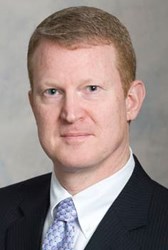The Language Of Our Industry
By Louis Garguilo, Chief Editor, Outsourced Pharma

“Language ought to be the joint creation of poets and manual workers.”
George Orwell
True character and the quality of our thoughts are revealed in the way we talk about ourselves and the events in which we participate. We may purposely affect certain patterns of language, but the real thing is sooner or later uncovered.
Or something like that. We also know we have to walk the talk, as the more succinct saying puts it. Considering specifically the language of the contract drug discovery, development and manufacturing industry, in a recent outsourcing survey conducted by contractpharma.com, 75% of respondents said that they would use the word “partnership” to describe their relationship with their contract service providers. That has to be good news for both pharma sponsors and the CROs/CMOs around the world, and points to an improvement in level of service delivered by the latter.
Month after month we anticipate exciting and important news from both sponsors and providers about new deals – excuse me, partnerships – for global services. And we can expect more of the same: The global pharma contract manufacturing market alone is expected to reach $47 billion by 2015, according to a recent report by Global Industry Analysts, Inc.
Perhaps one of the announcements that best represents use of the modern-day idiomatic expression of business in our industry came from Evotec and Debiopharm earlier this month. What also strikes us at Outsourced Pharma about the news that Evotec and Debiopharm will collaborate on a new treatment for cancer is just how much these two companies and this alliance provides real illustration of the discussion we (and many others) have been working through recently (e.g., see Who is next? Consolidation and Proliferation in the CRO/CMO Market): the combination of industry players into new organizations with expanded capabilities, and more vested and mutual sponsor-provider responsibilities.
Take a look at the company descriptions in the Depiohparm press release of April 2nd announcing the collaboration:
-- Debiopharm Group™ is a Swiss-based global biopharmaceutical group of four companies active in drug development, GMP manufacturing of proprietary drugs, diagnostics, and investments.
-- Evotec is a drug discovery alliance and development partnership company focused on rapidly progressing innovative product approaches with leading pharmaceutical and biotechnology companies.
Groups of companies; drug discovery alliances; development partnerships. All the trending words of the outsourcing industry. In this case, both the biopharma company and the service provider themselves represent the industry’s continuing move towards more strategic relationships and integrated services in an effort to deliver more successful outcomes in the pursuit of new drugs.
This announcement appears to have all the makings of the current industry ideal:
- research collaboration and licensing
- R&D funding; clinical, regulatory and commercial milestones; royalties on sales of commercial products
- collaboration to identify and develop novel compounds
- discovery and pre-clinical development efforts driven by one partner
- clinical development efforts driven by the other partner
The executive quotes for the collaboration are right on cue as well (italics inserted):
“Dr Cord Dohrmann, Chief Scientific Officer of Evotec, commented: “We are very excited about this innovative collaboration structure between Debiopharm and Evotec.”
From Debiopharm’s Chief Scientific Officer Andrés McAllister, "This is a fine example of how drug discovery and development will be in the future: a mixture of complementarities looking to bring to a defined population of patients a drug that will change the outcome of disease.”
Walk the Talk
Not quite sure what George Orwell would think about “a mixture of complementarities,” but it certainly does sound like a combination for the future. For those following the interactions of the industry today, though, this truly does represent and reinforce the ideal structure for sponsor-provider collaboration of which we have been hearing via the evolving vernacular. There is an inflexion point at which “trending” becomes the norm; 2014 appears to be that point. The future is here and this is the state of global drug discovery, development and manufacturing today.
The question now is whether or not these types of collaborations and integrated efforts scientifically propel the industry forward. Success will be judged by the resultant science: compounds and treatments that continue to improve and save human lives. We all know drug discovery and development takes time, so judgments will be slow in coming, but it is just because of this time lapse that vigilant measurement of success must be tracked along the way and ultimately. In some ways these deepened relationships and mutual collaborations should necessitate even more scrutiny and call for the implementation of creative new measurements and milestones. When partners are so closely aligned, will they be able to make the hard decisions to end programs when warranted, and keep funding those that show at least some promise? Until now, that call has been almost exclusive to the pharmaceutical sponsor.
Of course for patients worldwide the meaningful focus is on two industry players fostering synergies for the potential development of novel compounds, in this case to treat various tumors and leukemia with defined genetic alterations. (The companies specifically named potential disease areas including AML [Acute Myeloid Leukemia], prostate cancer and glioblastoma.) With this and each exciting business collaboration in the pharmaceutical and biotechnology industries, all of us must keep the healthcare consumer and patient foremost in mind. We can call these deeper relationships what we want and talk about them within the paradigm of the day, but paradigms are only frameworks of understanding and the words will only gain real meaning through tangible results in the labs, marketplace and with patient outcomes.
